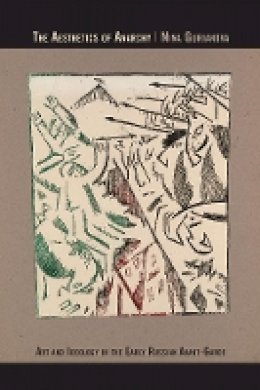23%OFF

Stock image for illustration purposes only - book cover, edition or condition may vary.
The Aesthetics of Anarchy: Art and Ideology in the Early Russian Avant-Garde
Nina Gurianova
€ 84.81
€ 65.32
FREE Delivery in Ireland
Description for The Aesthetics of Anarchy: Art and Ideology in the Early Russian Avant-Garde
Hardback. Identifies the early Russian avant-garde (1910-1918) as a distinctive movement in its own right and not a preliminary stage to the Constructivism of the 1920s. This title also identifies aesthetics of anarchy - art-making without rules - that greatly influenced early twentieth-century modernists. Num Pages: 360 pages, 68 scattered halftones. BIC Classification: 1DVUA; 3JJC; 3JJF; ACXD. Category: (P) Professional & Vocational. Dimension: 159 x 235 x 26. Weight in Grams: 716. Art and Ideology in the Early Russian Avant-Garde. 360 pages, Illustrations. Identifies the early Russian avant-garde (1910-1918) as a distinctive movement in its own right and not a preliminary stage to the Constructivism of the 1920s. This title also identifies aesthetics of anarchy - art-making without rules - that greatly influenced early twentieth-century modernists. Cateogry: (P) Professional & Vocational. BIC Classification: 1DVUA; 3JJC; 3JJF; ACXD. Dimension: 159 x 235 x 26. Weight: 716.
In this groundbreaking study, Nina Gurianova identifies the early Russian avant-garde (1910-1918) as a distinctive movement in its own right and not a preliminary stage to the Constructivism of the 1920s. Gurianova identifies what she terms an "aesthetics of anarchy" - art-making without rules - that greatly influenced early twentieth-century modernists. Setting the early Russian avant-garde movement firmly within a broader European context, Gurianova draws on a wealth of primary and archival sources by individual writers and artists, Russian theorists, theorizing artists, and German philosophers. Unlike the post-revolutionary avant-garde, which sought to describe the position of the artist in the ... Read more
In this groundbreaking study, Nina Gurianova identifies the early Russian avant-garde (1910-1918) as a distinctive movement in its own right and not a preliminary stage to the Constructivism of the 1920s. Gurianova identifies what she terms an "aesthetics of anarchy" - art-making without rules - that greatly influenced early twentieth-century modernists. Setting the early Russian avant-garde movement firmly within a broader European context, Gurianova draws on a wealth of primary and archival sources by individual writers and artists, Russian theorists, theorizing artists, and German philosophers. Unlike the post-revolutionary avant-garde, which sought to describe the position of the artist in the ... Read more
Product Details
Format
Hardback
Publication date
2012
Publisher
University of California Press
Number of pages
360
Condition
New
Number of Pages
360
Place of Publication
Berkerley, United States
ISBN
9780520268760
SKU
V9780520268760
Shipping Time
Usually ships in 7 to 11 working days
Ref
99-1
About Nina Gurianova
Nina Gurianova is Associate Professor of Slavic Languages and Literatures at Northwestern University. She is the author of Exploring Color: Olga Rozanova and Early Russian Avant-Garde.
Reviews for The Aesthetics of Anarchy: Art and Ideology in the Early Russian Avant-Garde
